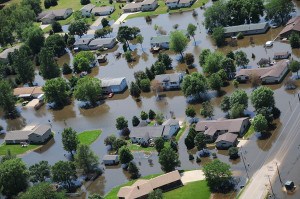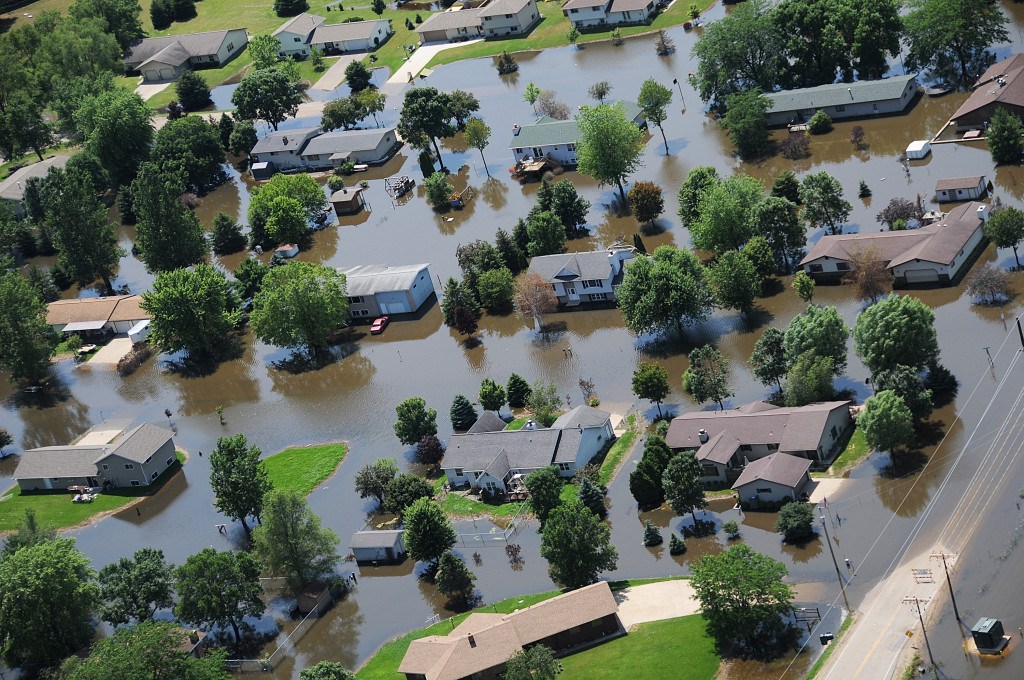A devastating flood in 2008 that killed three people and caused $763 million in damage also changed the landscape of many Wisconsin counties – and while the changes were hard to stomach for some, authorities say the state learned valuable lessons and will be ready for the next big rain event.
“We are better prepared,” said Lori Getter, a spokeswoman for Wisconsin Emergency Management. “The Kickapoo River will flood again one day, and we know that all of these rivers will have flood events again. We know this is going to happen but we have a lot of lessons learned.”

The 2008 rains followed a winter of record-breaking snowfall, which left the ground saturated and more susceptible to flooding.
So after a 15-day rain event that June, the Baraboo River threatened Circus World exhibits, topped the Main Street bridge in Reedsburg and wreaked havoc on the Mid-Continent Railway Museum in North Freedom. In Sauk County, an estimated 200 people had to be rescued, a nursing home was evacuated, and several lost children were found. Flooding shut down dozens of roads, and authorities are currently studying the state’s 743 miles of interstate in an effort to identify flood-prone areas.
The Wisconsin State Journal reported Sunday that in the aftermath, counties worked to remove buildings from flood plains and build larger culverts and ditches to handle heavy rainfall.
When Lake Delton broke through its bank and drained into the Wisconsin River, it took five homes with it, as well as an estimated $20 million in summer business from hotels, bait shops, a boat rental company and the Tommy Bartlett Ski Show. A $9 million project repaired the breach on the lake’s north shore, improved the dam and refilled the lake in time for the 2009 summer tourist season.
“I always say something good comes from something bad,” said Tom Diehl, owner of Tommy Bartlett and Lake Delton’s village president. “Five years later the lake is much, much better than it was in pre-breach condition.”
The breach removed carp and led to the creation of a park, with a fishing pier.
But in the town of Spring Green there was no comeback. Instead, more than $7 million was spent to remove the flood-damaged Prairie House Motel and 14 homes from the nearby Prairie View subdivision. The area is now nothing more than abandoned streets and fields of dandelions.
The community of Gay Mills may have seen the biggest change over the past five years.
More than $10 million has been spent to remove properties from the flood plain and elevate others. Many residents and businesses moved to higher ground, including a grocery store and gas station, and a new $2.1 million Community Commerce Center that is home to village offices, the library and the Kickapoo Culinary Center, a commercial kitchen that can be rented.
The Mercantile Center includes space for several businesses, including the village’s only barber shop, owned and operated by Robert E. Lee. He said he feels better after moving to higher ground.
“I wasn’t out here two weeks and I realized I’m not sneezing anymore,” said Lee, 68. “The mold was slowly killing me down there. I didn’t realize what I was living in.”
But not everyone is pleased. The village has lost about 20 percent of its residents, putting a higher tax burden on those who stayed, said Craig Anderson, who served as village president from 2011 to this past April.
“It’s created quite a challenge for the village,” Anderson said. “I was not against new development but the writing off of the original part of the village.”
___
Was this article valuable?
Here are more articles you may enjoy.


 GSK Zantac Appeal Gets Tough Questions From Some US Judges
GSK Zantac Appeal Gets Tough Questions From Some US Judges  Uber Spends Six Figures on Ads in Latest NY Insurance Reform Push
Uber Spends Six Figures on Ads in Latest NY Insurance Reform Push  FEMA Denies Washington State Disaster Relief From Bomb Cyclone, Governor Says
FEMA Denies Washington State Disaster Relief From Bomb Cyclone, Governor Says  Forecast Calls for Wildfires to Burn More Land Across U.S. This Year
Forecast Calls for Wildfires to Burn More Land Across U.S. This Year 